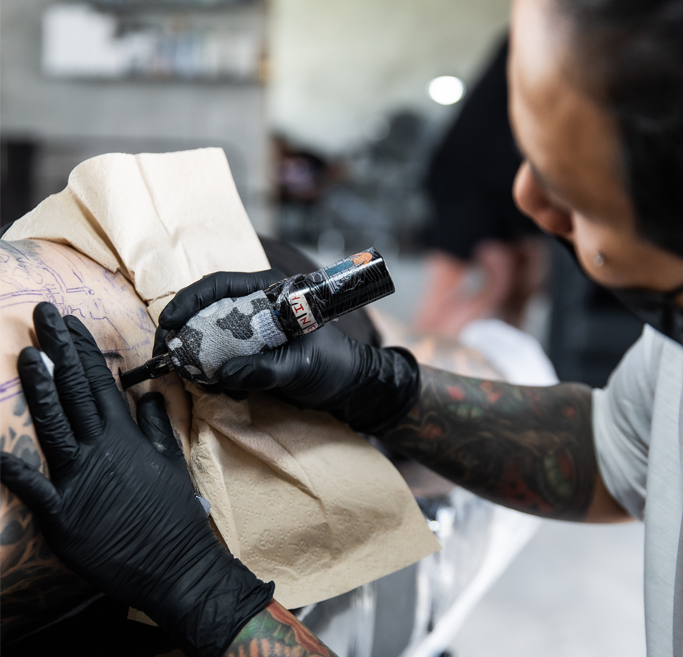How Long After Getting A Tattoo Should I Put Cream on?
Applying cream after a tattoo is an essential part of the healing process, but timing matters. You shouldn’t rush to apply lotion immediately after your session, nor should you wait too long. Generally, you should start applying tattoo aftercare cream a few hours after your tattoo session, once your artist has cleaned the area, wrapped it, and given you instructions. The exact timing depends on how your skin reacts, the size of the tattoo, and your artist’s preferred aftercare method.

The First Few Hours After Getting a Tattoo
Right after finishing your tattoo, your artist will clean the area with an antibacterial solution and cover it with cling film or a medical dressing. This protective layer shields your fresh tattoo from bacteria, dirt, and friction.
During this initial stage, don’t apply any cream yet. Your skin needs time to start the natural healing process; your body will form a thin protective layer of plasma and lymph fluid. This helps seal the wound and prevent infection.
Typically, your artist will advise you to keep the wrap on for 2 to 4 hours (sometimes overnight for larger tattoos). Once you remove it, wash your hands thoroughly and gently clean your tattoo with lukewarm water and mild, fragrance-free soap. Then, pat it dry using a clean paper towel or soft cloth. Never rub.
When to Apply Cream for the First Time
After cleaning and drying your tattoo for the first time, you can start applying aftercare cream. This usually happens within 3 to 5 hours of getting tattooed, depending on your artist’s advice.
Choose a fragrance-free, non-greasy, and tattoo-safe moisturiser. Many artists recommend ointments specifically made for tattoo aftercare. At Quiet Ink Studio, we suggest lightweight creams that allow your skin to breathe while keeping it hydrated to help prevent scabbing and cracking.
Apply a thin, even layer using clean fingertips. You don’t need a lot; just enough to keep the tattoo slightly moist without suffocating it. Over-moisturising can clog pores and slow the healing process.
The First Week: Keep It Clean and Lightly Moisturised
For the first 5 to 7 days, your tattoo will go through several healing phases. You might notice redness, tenderness, or light scabbing. That’s perfectly normal. During this stage, your routine should be:
o Wash your tattoo twice a day (morning and evening).
o Apply a thin layer of aftercare cream after each wash.
o Avoid heavy creams, oils, or petroleum-based products, which can trap heat and bacteria.
This period is crucial for preventing infection and ensuring your tattoo retains its detail. Proper hydration helps your skin regenerate smoothly while keeping the ink vibrant.
Weeks Two to Four: Transitioning to Regular Moisturiser
By the second week, your tattoo will start to peel and flake, much like a mild sunburn. Don’t pick or scratch it. Continue applying your tattoo cream once or twice daily as needed to relieve dryness or itchiness.
Around week three, when most of the scabs have fallen off naturally, you can switch to a gentle daily moisturiser instead of heavy aftercare ointment. You tattoo may still look slightly dull while new skin layers form underneath, but this will improve as healing finishes.
Complete healing usually takes 2 to 4 weeks, though larger tattoos may take longer. Keeping the skin moisturised throughout this time helps preserve the tattoo’s colour and line sharpness.
The Quiet Ink Studio Approach to Tattoo Aftercare
We believe great tattoos deserve great aftercare. Our artists provide clients with personalised healing instructions based on tattoo size, placement, and skin type. We only recommend aftercare creams that are safe, high-quality, and proven to support skin recovery.
We also remind clients to protect their tattoo from sun exposure during healing. UV rays can damage fresh ink, so avoid direct sunlight and never apply sunscreen to a new tattoo until it’s fully healed.
If you ever experience unusual redness, swelling, or discomfort, we’re always happy to offer guidance or check in on your healing progress.



